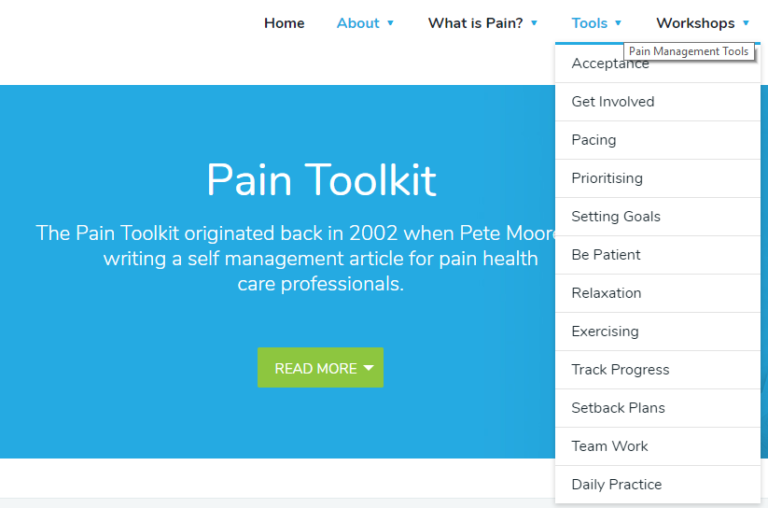Now that I have your attention...
Your therapist isn't a tool in the urban dictionary sense of the word, which is basically the equivalent of an idiot. Your therapist is a tool in more of a "means to an end" sense of things.
As a tool for managing your situation, therapists should be just one option. If you have pain, whether it's acute, recurrent or chronic, your toolbox should be full of ways to manage and change the experience. You should be able to reach into it and find the strategy, resource or activity that works for you for that specific situation.
The Pain Toolkit, a UK resource by Pete Moore provides an idea of some of the tools you could have in your toolbox.
How Does The Therapist Tool Work?
Pain, stiffness and tension are responses to various life impacts, and they are rarely static. That's why you need more than one tool at your disposal. When you're in pain, have feelings of stiffness or tension, and are having trouble with movement or doing the activities you need to do, a manual or physical therapist might be the tool you turn to for help. They have their own tools and can provide you with:
- advice for management
- pain relief
- exercises
- a plan for progression
- referral if needed
- reassurance that you are ok, among other things.
They have hands-on skills, resources that could be helpful, and ideas for exercise and movement that you might not have thought of yourself. You can almost think of them as a tool generator.
What Happens When A Tool Stops Working?
As your symptoms change, so do your needs for treatment or management. A variety of tools gives you options for each situation and you will likely cycle through them depending on your need. That includes your therapist. They may have been helpful for immediate pain relief during a flare-up, but not so useful for the persistent pain that still lingers. Or they provided a great treatment plan and are really helpful with getting you to do the exercises. Or the treatment they provide feels good and you use it as part of your self-care.
While your therapist or any other tool is useful for you, continue to use them.
Caveat
If you find yourself frequently relying on just one or two tools to help you feel better, then it's time to sort through your tools, put aside the ones that no longer work and maybe think about getting some new ones.
Don't put any tool in your toolbox, especially your therapist, if rather than being a means to an end they declare themselves "the end." If they:
- present themselves or their modality as the ONE thing that will get you better.
- blame something about you (posture, joint position, sitting position) as the reason for your pain.
- provide only passive treatment if your rehab goals are active (only massage for low back pain, for instance).
- require you 'buy in' to a pre-paid series of treatments.
- provide no plan for progression.
- treat you for pain without being up to date on the most current best practices;
they are indeed a tool, but not the useful kind.

